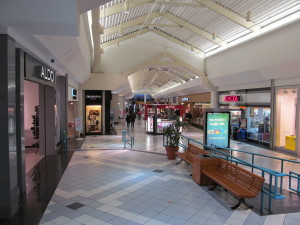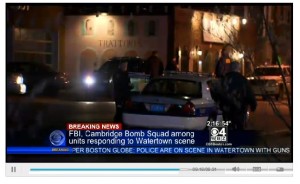Yesterday, I checked my Facebook and saw that an old friend who grew up a few blocks away from me in the East End of Watertown had reposted an article by the Watertown Patch blog that said the Arsenal Mall was going to be redeveloped into a “tech,hipster mecca.”
The Patch article cited a Boston Globe story from July 1st, 2013 that had more details. Jonathan Bush, CEO of Athenahealth (and cousin of George W. Bush) is teaming with two real estate development firms, Boylston Properties and the Wilder Company to purchase the Arsenal Mall, the Home Depot/Golfsmith building (aka the Ann and Hope for all you old Watertownies out there) and the Harvard Vanguard Building. These three buildings comprise the entire Arsenal Mall complex. In addition, Boylston Properties has purchased the former Charles River SAAB dealership on the other side of Arsenal Street and plans to develop the property into a hotel.
Athenahealth, a medical records company, purchased the Arsenal on the Charles property as their corporate headquarters (which is a separate entity from the Arsenal Mall) from Harvard University for $168.5 million. The deal was finalized in May 2013. Athenahealth sounds like they sincerely want to make the Arsenal their home base and recently got a huge tax break from the Commonwealth in return for adding more jobs in Watertown.
Harvard University purchased the Arsenal on the Charles in 2001 for $162.6 million. Everyone expected Harvard to do something big but after they took a big hit during the “Great Recession” nothing was really done there except to rent out space to other tenants.
The Arsenal was a U.S. Army base from 1816-1995. For the most part, the Arsenal produced guns, artillery, and other weapons. From World War I to World War II, the Arsenal expanded rapidly. In the post-WWII years, activities at the Arsenal included building an early nuclear reactor as well as depleted uranium testing, which required that it be listed as a Superfund site from 1994-2006. A link to the Superfund site material is available here. For some decent online overviews of the Arsenal’s history, check out the Wikipedia page, the Cold War-MA page, or GlobalSecurity.org.
Once I got over the initial shock of the news- especially the part in the Globe article that referred to the Arsenal Mall as “a scruffy stretch of East Watertown” and Bush referring to it as “a black hole-” it began to sink in. Everyone has known this day was going to come at least since 1968, when the eastern parcel of the Arsenal was sold to Watertown. Rumor has it that the University of Massachusetts wanted to build a campus there, but the parcel wasn’t redeveloped until the Arsenal Mall was opened in 1983.
The Arsenal on the Charles is 29 acres and at it’s largest extent, the Arsenal property was nearly 100 acres, which has to make it one of the larger parcels of land still available for development in the Boston area.
If this plan to turn the Arsenal Mall complex into a “tech, hipster mecca” comes to fruition, it will drastically change the culture of the East End. Right now, it is a quiet middle class neighborhood best known worldwide as either being an Armenian enclave or .
All I can say for certain is that the East End will never quite be the same. Hopefully it will be for the better, especially in terms of tax revenue for the town. The Arsenal army base generated no tax revenue for the town for around 175 years and as an educational institution, Harvard didn’t contribute much either. Was developing the eastern parcel into the Arsenal Mall the best use of that space? Probably not, but it has been there most of my life.
I grew up in the East End and my parents (soon to be grandparents) still live there. Even though I have lived in Seattle for a long time and love it out here, you can’t take Watertown out of me. I have spent many years studying Watertown history with a concentration in the East End and conducting amateur environmental archaeology surveys of the area, including one on Sawin’s Pond. Needless to say I am taking a keen, opinionated interest in this subject and hope that my expertise in the history of the area will come in handy as things develop.



